
My Generation is the debut studio album by English rock band the Who, released on 3 December 1965 by Brunswick Records in the United Kingdom, and Festival Records in Australia. In the United States, it was released on 25 April 1966 by Decca Records as The Who Sings My Generation, with a different cover and a slightly altered track listing. Besides the members of the Who, being Roger Daltrey (vocals), Pete Townshend (guitar), John Entwistle (bass) and Keith Moon (drums), the album features contributions by session musician Nicky Hopkins (piano).
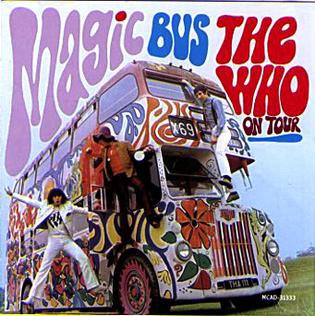
Magic Bus: The Who on Tour is a compilation album by English rock band the Who. It was released as the band's fourth album in the United States by Decca in September 1968 to capitalize on the success of their single of the same name. It is a compilation album of previously released material, and was not issued in the UK, although the album was also released at approximately the same time in Canada. It peaked at #39 on the Billboard 200.

Country Joe and the Fish was an American psychedelic rock band formed in Berkeley, California, in 1965. The band was among the influential groups in the San Francisco music scene during the mid- to late 1960s. Much of the band's music was written by founding members Country Joe McDonald and Barry "The Fish" Melton, with lyrics pointedly addressing issues of importance to the counterculture, such as anti-war protests, free love, and recreational drug use. Through a combination of psychedelia and electronic music, the band's sound was marked by innovative guitar melodies and distorted organ-driven instrumentals which were significant to the development of acid rock.

Ogdens' Nut Gone Flake is the third studio album, and only concept album by the English rock band Small Faces. Released on 24 May 1968, the LP peaked at number one on the UK Album Charts on 29 June, where it remained for six weeks. It became the group's final studio album during their original incarnation. The album title and distinctive packaging design was a parody of Ogden's Nut-brown Flake, a brand of tinned tobacco that was produced in Liverpool from 1899 by Thomas Ogden.

Long Tall Sally is the fifth UK EP release by British rock band the Beatles and the band's first UK EP to include songs not previously released on an album or single in the United Kingdom. It was released by Parlophone in mono, with the catalogue number GEP 8913, and released in the United Kingdom on 19 June 1964. It was also released in Spain and France.
"Across the Universe" is a song by the English rock band the Beatles. It was written by John Lennon and credited to Lennon–McCartney. The song first appeared on the 1969 various artists' charity compilation album No One's Gonna Change Our World and later, in a different form, on their 1970 album Let It Be, the group's final released studio album. The original version featured on two different albums both titled Rarities: a 1978 British release and a 1980 US release. It was also included on their 1988 album Past Masters, Volume Two. The song has been covered by many artists, including David Bowie on his 1975 album Young Americans, which featured contributions from Lennon.
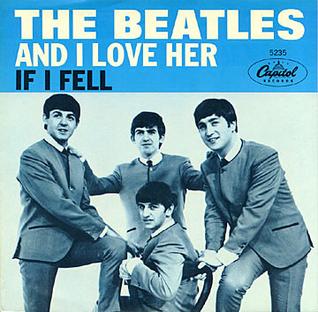
"And I Love Her" is a song recorded by English rock band the Beatles, written primarily by Paul McCartney and credited to the Lennon–McCartney partnership. It is the fifth track of their third UK album A Hard Day's Night and was released 20 July 1964, along with "If I Fell", as a single release by Capitol Records in the United States, reaching No. 12 on the Billboard Hot 100.

"I Call Your Name" is a song recorded by the English rock band the Beatles and credited to Lennon–McCartney. It was written primarily by John Lennon, with assistance from Paul McCartney. It was released in the US on The Beatles' Second Album on 10 April 1964 and in the UK on the Long Tall Sally EP on 19 June 1964. On 7 March 1988, the song appeared on Past Masters, a compilation album that includes every song commercially released by the band that was neither included on the 12 UK studio albums nor the US Magical Mystery Tour LP, meaning that "I Call Your Name" appeared for the first time on a core catalogue album.

The Psychedelic Sounds of the 13th Floor Elevators is the debut studio album by the 13th Floor Elevators. The album's sound, featuring elements of psychedelia, hard rock, garage rock, folk, and blues, is notable for its use of the electric jug, as featured on the band's only hit, "You're Gonna Miss Me", which reached number 55 on the Billboard Hot 100 with "Tried to Hide" as a B-side. Another single from the album, "Reverberation (Doubt)", reached number 129 on the Billboard's Bubbling Under chart.

"Green Tambourine" is a song written and composed by Paul Leka and Shelley Pinz. It was the biggest hit by the 1960s Ohio-based rock group the Lemon Pipers, as well as the title track of their debut album, Green Tambourine. The song was one of the first psychedelic pop chart-toppers and became a gold record.

Music in a Doll's House is the debut album by English progressive rock group Family, released on 19 July 1968. The album, co-produced by Dave Mason of Traffic, features a number of complex musical arrangements contributing to its ambitious psychedelic sound.
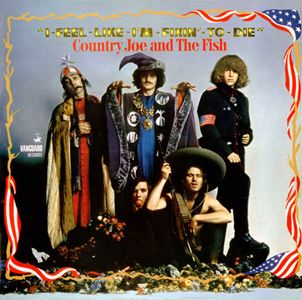
I-Feel-Like-I'm-Fixin'-to-Die is the second studio album by the influential San Francisco psychedelic rock band, Country Joe and the Fish, released at the end of 1967.

Neil Young Archives Vol. 1: 1963–1972 is the first in a planned series of box sets of archival material by Canadian-American musician Neil Young. It was released on June 2, 2009, in three different formats - a set of 10 Blu-ray discs in order to present high resolution audio as well as accompanying visual documentation, a set of 10 DVDs and a more basic 8-CD set. Covering Young's early years with The Squires and Buffalo Springfield, it also includes various demos, outtakes and alternate versions of songs from his albums Neil Young, Everybody Knows This Is Nowhere, After the Gold Rush, and Harvest, as well as tracks he recorded with Crazy Horse and Crosby, Stills, Nash & Young during this time. Also included in the set are several live discs, as well as a copy of the long out-of-print film Journey Through the Past, directed by Young in the early 1970s.

"I-Feel-Like-I'm-Fixin'-to-Die Rag" is a song by the American psychedelic rock band Country Joe and the Fish, written by Country Joe McDonald, and first released as the opening track on the extended play Rag Baby Talking Issue No. 1, in October 1965. "I-Feel-Like-I'm-Fixin'-to-Die Rag"'s dark humor and satire made it one of the most recognized protest songs against the Vietnam War. Critics cite the composition as a classic of the counterculture era.

Love Is the Song We Sing: San Francisco Nuggets 1965–1970 is the fourth Nuggets box set released by Rhino Records. It was released in 2007 and packaged as an 8 1/2 x 11" 120 page hardcover book, the first 73 pages of which were made up mostly of vintage photographs. The compilation focuses on San Francisco Sound bands. Its title is derived from the first line of "Get Together," two versions of which open and close the four-disc set. Although the liner notes cite the 1965 Rag Baby EP as the source for the Country Joe & the Fish track "I-Feel-Like-I'm-Fixin'-To-Die Rag", it was actually taken from the 1967 LP I-Feel-Like-I'm-Fixin'-To-Die.

Together is the third album by the San Francisco psychedelic rock band Country Joe and the Fish, released in 1968. Country Joe McDonald had briefly left the band prior to the recording sessions. All of the band members contributed to the songwriting. Together is the most commercially successful album from the band.
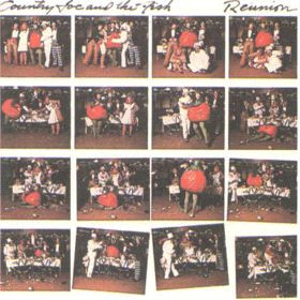
Reunion is the sixth studio album by the American psychedelic rock group Country Joe and the Fish, released in 1977. It constituted a reunion of the members of the 1967 band. It was produced by Sam Charters for Fantasy Records and recorded between January and April 1977. The music is not as psychedelic, and several tracks are country rock.
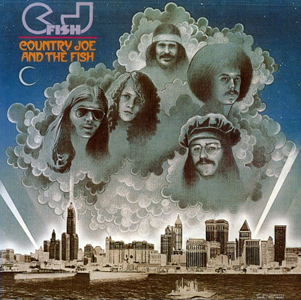
CJ Fish is the fifth album by the San Francisco psychedelic rock group, Country Joe and the Fish, released in April 1970 on the Vanguard label. It would be the first production with Tom Wilson and Country Joe & the Fish's last studio album for Vanguard Records. Recording took place at the Record Plant in Los Angeles, California.

Here We Are Again is the fourth album by the psychedelic rock band Country Joe and the Fish. It was released in 1969 with the US catalog number Vanguard VSD 79299. It peaked on the Billboard 200 at number 48, and stayed on the charts for eleven weeks. Only "Country Joe" McDonald and Barry "The Fish" Melton remained from the original lineup, which had begun breaking up since the previous album. The past members would appear as guest musicians though. The songs were composed by McDonald and Melton.

The Life and Times of Country Joe and the Fish is a compilation album by the American psychedelic rock band Country Joe and the Fish and was released on Vanguard Records in September 1971. The album provides a summary of Country Joe and the Fish's history from their formation in 1965 to their disbandment in 1970, and also serves as a survey of their recording career during that span. Although the track listing is not in a specified chronological order, it does encompass a mixture of their most celebrated experimental and traditionally-structured compositions. All of the songs included on the original The Life and Times of Country Joe and the Fish album can all be found on the band's first five albums, Electric Music for the Mind and Body, I-Feel-Like-I'm-Fixin'-to-Die, Together, Here We Are Again, and CJ Fish.



















